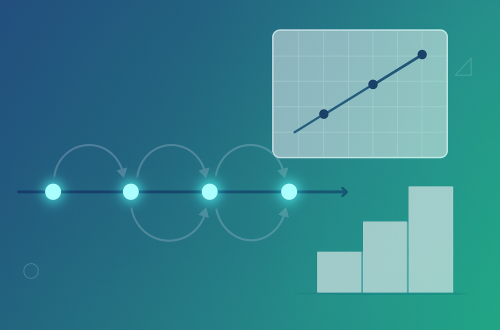For many students, mathematics feels like a mysterious code — a language full of symbols that must be memorized rather than understood. Yet behind every formula lies a visual logic, a geometric or graphical structure that can make it suddenly click. Visualizing formulas helps turn abstract concepts into mental pictures, bridging intuition and algebra.
In this essay, we explore how visualization transforms mathematical learning. We’ll see how geometric representation explains why certain formulas are true, how technology can turn equations into interactive experiences, and how students can use visualization to develop stronger conceptual understanding. From the elegance of the Pythagorean theorem to the symmetry of quadratic functions, visualization reveals that mathematics is not only logical — it is profoundly visual.
Seeing the Geometry Behind Algebra
At its core, every algebraic formula describes a relationship between quantities. Visualization gives that relationship a shape. When students see how formulas look — not just how they compute — understanding becomes more intuitive.
Take the famous Pythagorean theorem,
. On paper, it may appear as a simple equality. But in geometric form, it expresses a deep truth about space: the area of the two smaller squares on the legs of a right triangle equals the area of the square built on the hypotenuse. When drawn, this formula ceases to be arbitrary. It becomes a statement about area equivalence — about how shapes fit together.
Visualization also clarifies algebraic transformations. Consider the formula for the area of a circle,
. Students often memorize it mechanically, but through visualization, they can see that the circle can be decomposed into infinitesimal “slices” — triangles whose bases form the circumference (
) and whose heights are the radius (
). Arranged together, these slices form a rectangle with sides
and
, showing that
is not magic but geometry in disguise.
This geometric intuition extends beyond basic shapes. In algebra, equations like
gain clarity when seen as lines crossing a coordinate grid. Even complex relationships, such as exponential growth (
), become understandable when visualized as curves that rise steeply, illustrating the idea of “growth upon growth.”
Visualization turns formulas from static text into moving stories about relationships — the way distance, area, and rate interact across space.
Why Visual Thinking Improves Mathematical Understanding
Psychologists and math educators have long emphasized that visualization enhances comprehension and memory. The human brain processes images far more efficiently than abstract symbols. When a student connects a formula to a visual model, they activate both verbal and spatial reasoning centers, reinforcing understanding through dual coding.
Research in cognitive science shows that successful problem solvers mentally “see” relationships. They don’t just manipulate numbers — they imagine graphs, angles, or proportions. For instance, when thinking about a quadratic equation
, visualizing its parabola helps the learner grasp how coefficients affect its shape and position. Changing
,
, or
moves the curve, and this movement embodies the algebraic concept itself.
Visual learning also builds conceptual transfer — the ability to apply knowledge to new contexts. A student who understands that
expresses area relationships can later grasp vector magnitude (
) or even distance in three-dimensional space (
). The formula evolves, but the visual core — geometry — remains constant.
| Formula Type | Typical Abstract Form | Visual Representation | Conceptual Meaning |
|---|---|---|---|
| Pythagorean Theorem |
|
Squares built on triangle sides | Relationship between areas |
| Linear Equation |
|
Straight line on coordinate plane | Constant rate of change |
| Circle Area |
|
Decomposed circle into rectangle | Area as sum of infinitesimal parts |
| Quadratic Function |
|
Parabolic curve | Symmetry and vertex behavior |
| Exponential Growth |
|
Rapidly rising curve | Compounding increase over time |
This table demonstrates how visualization gives every formula an identity — a face, so to speak. The pattern is clear: when abstract relationships acquire form, they become part of memory and imagination.
Technology and the Power of Interactive Visualization
Modern technology has revolutionized the way we can visualize formulas. Interactive graphing tools, 3D modeling software, and animations allow students to see mathematics unfold dynamically.
Applications like Desmos, GeoGebra, and WolframAlpha provide immediate feedback: when a student adjusts a parameter in a function, the graph responds instantly. The once-static formula becomes alive, responsive, and tangible. This interactivity helps bridge the gap between symbolic manipulation and conceptual insight.
For example, in a quadratic function, dragging sliders for
,
, and
reveals how the parabola opens, shifts, or flips. In trigonometry, seeing sine and cosine waves animate as the angle grows transforms abstract periodicity into rhythm. Students no longer just read formulas — they experience them.
Technology also supports multimodal visualization. A student can listen to a function’s sound (as frequency), feel it through haptic feedback (in accessibility interfaces), or watch 3D graphs rotate. Such multisensory approaches align with embodied cognition — the theory that learning improves when knowledge is grounded in sensory and motor experiences.
Still, educators must strike a balance. Visualization should not replace reasoning but enhance it. Technology can tempt learners to rely on appearance rather than understanding. An animated curve is captivating, but without mathematical explanation, it becomes spectacle rather than insight. The goal is interpretive visualization — using images as reasoning tools, not decorations.
To achieve this balance, instructors can encourage three-step visualization exercises:
-
Predict – Before plotting, ask students to imagine how the graph should look.
-
Visualize – Use software to confirm or refute their intuition.
-
Explain – Articulate why the visual behaves as it does.
This process turns visualization into a scientific inquiry, reinforcing both imagination and logic.
Building Intuition Through Visual Learning
Mathematical intuition grows when visualization becomes habitual. Instead of memorizing formulas, learners begin to think in shapes and patterns. They see the slope in a linear equation, the curvature in a quadratic, the symmetry in a circle. Visualization bridges the divide between computation and comprehension.
Teachers can cultivate this visual mindset through structured activities:
-
Draw the Formula – Have students sketch what they think a formula represents before showing the official graph.
-
Color Coding – Use colors to represent different terms or parameters in equations. For instance, in
, highlight slope (
) and intercept (
) with distinct colors to emphasize their roles.
-
Geometric Analogies – Relate formulas to physical analogies, like tension in a string (linear function) or projectile motion (quadratic function).
-
Graph Transformations – Encourage exploration: “What happens if I double this coefficient?” or “What if this term turns negative?”
Over time, these exercises train students to see math, not just calculate it. Visualization becomes a form of internal dialogue — a cognitive sketchpad that links numbers to space and logic to imagery.
Moreover, visualization fosters confidence and creativity. Students who visualize tend to explore problems from multiple perspectives. They experiment more, fear mistakes less, and perceive mathematics as dynamic rather than rigid. This mindset mirrors the approach of great mathematicians, who often describe “seeing” solutions before proving them.
Einstein, for example, famously claimed that he thought in images, not words. Similarly, the mathematician Henri Poincaré wrote that creative insight arises from “the sudden illumination” that links visual forms in the mind. In this sense, visualization is not just a study technique — it is the heart of mathematical creativity.
Conclusion: From Symbols to Understanding
Formulas are the language of mathematics, but visualization is its voice. It is what transforms
from a string of symbols into a statement about shapes, balance, and reality. Visualization helps students connect abstract reasoning with sensory experience, making mathematics intuitive, memorable, and meaningful.
In education, visual thinking bridges the traditional divide between knowing and seeing. It allows learners to internalize structure, recognize patterns, and build a deeper understanding that goes beyond rote memorization. Technology has expanded this potential, allowing every student to experiment, animate, and interact with formulas in real time. Yet the essence remains timeless — the act of seeing mathematics as structure, space, and beauty.
Ultimately, visualization doesn’t simplify mathematics; it reveals it. Every formula, when seen clearly, tells a visual story — of balance, proportion, and logic woven into the very geometry of our world.
Mathematics, then, is not only written in numbers. It is drawn in the imagination.

